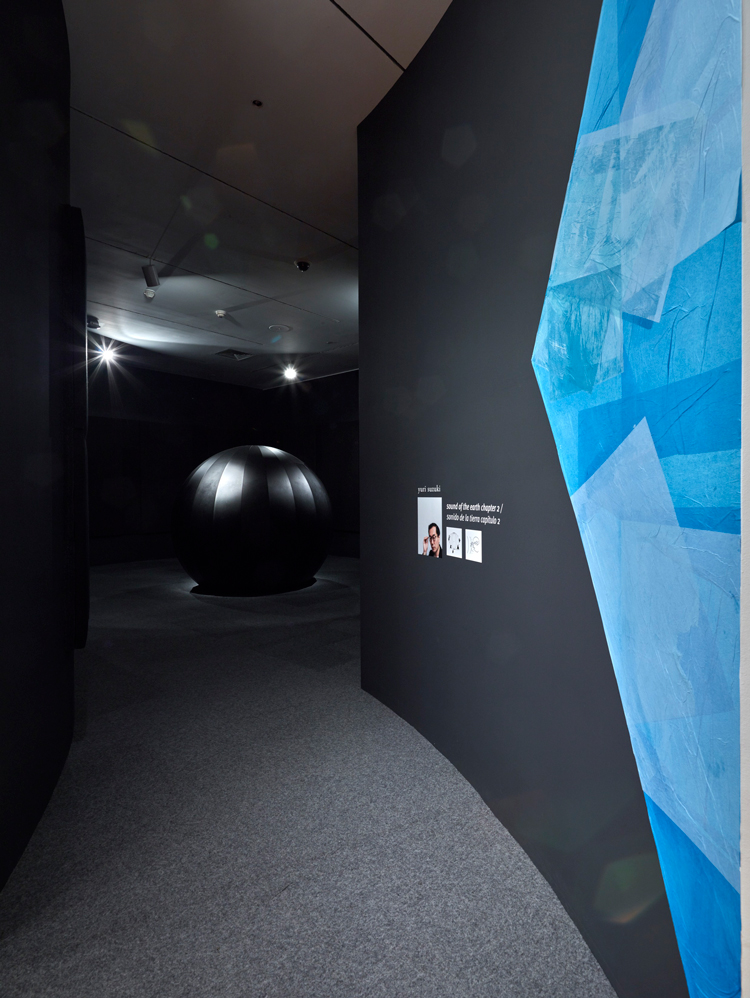Pentagram’s Yuri Suzuki is collecting the sounds of a pandemic
Sound of the Earth: Chapter 2 was originally unveiled at the Dallas Museum of Art. Now it’s being moved online, with a new name and interactive outlook.
The Dallas Museum of Art (DMA) and Pentagram sound designer Yuri Suzuki have launched Sound of the Earth: The Pandemic Chapter, an interactive artwork.
The website is a “crowdsourced archive of sounds captured around the world during this global pandemic”.The project originally took the form a real-life installation called Sound of the Earth: Chapter 2, which was created for speechless: different by design.
The multisensory exhibition, jointly organised by the DMA and Atlanta-based High Museum of Art, was closed early because of COVID-19.
“An open platform for people to express themselves”

The move online is an attempt to adapt to this “tremendous change”, Sarah Schleuning, interim chief curator at the museum says. “We wanted to create an open platform for people to express themselves and to capture our shared experience of the fleeting moments around us during this period.”
The original installation was designed by Suzuki, where the visitor encountered a “range of crowdsourced sounds by placing their ear against the surface of a spherical sculpture”. Now that the installation lives in the “virtual realm”, it has a “new relevance as a living record of our unprecedented historical moment that evolves in real time”.

Anyone from around the world can submit sounds of their lockdown experiences to the website. Suggestions include cooking dinner, the sound of sirens or online connections to loved ones. So far the sound of traffic, church bells and animal noises have been added. You can visit the page here.
Schleuning tells Design Week that the museum saw the pandemic as an “opportunity to use sound as a way to capture the diversity of our moments in a pandemic, and then as a connector, a way to experience our own humanity by listening and being enraptured by the sound of others”.
“Being connected via the web is a way to maximise the potential of the piece and offer a moment of wonder through the alchemy of this evolving work,” she adds.
How could coronavirus affect sound design?
Suzuki tells Design Week that while he does not believe sound design will be “drastically changed” because of the pandemic, he does think that “after the lockdown experience people will be very cautious about and aware of sounds around them, and that they create”.
He continues: “I do think that during this moment, everyone notices more details about sound. People are spending time at home, and are more sensitive to noises inside and outside of the home. For example, due to using Zoom, Skype, Google Hangouts, the acoustics of rooms directly affect our conversations. Also, the noises surrounding such as the sound of the refrigerator, boiling water, and eating lunch while meeting virtually create unpleasant sounds.”
The sounds of our homes was brought to attention by a recent Pentagram project, entitled Home Poems, a project Suzuki was involved in.
With The Pandemic Chapter, Suzuki hopes to present “an opportunity to hear the ambience of the world outside of our homes.”
Museums go online

The exhibition is part of the museum’s #DMAatHome series, an online offering which includes interactive virtual tours and DIY art-making projects.
It is not the only cultural institution that has had to adapt to changes in recent months. Across the UK, museums and galleries have made a push for online accessibility. One of the most high-profile is the British Museum, which has just revealed a major overhaul of its online resources.
The National Portrait Gallery, which would currently be holding its annual portrait prize, opened the exhibition virtually this week.
-
Post a comment





